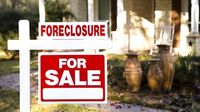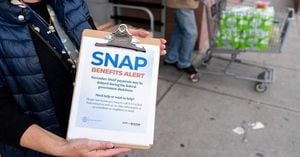Across the United States, a new wave of foreclosures is raising alarm among homeowners, investors, and policymakers alike. From the sun-scorched suburbs of Nevada to the neighborhoods of Indiana and the commercial corridors of California, the signs are unmistakable: the housing market is facing mounting pressure, and the consequences are rippling through communities large and small.
According to a report by ATTOM, August 2025 saw a total of 35,697 properties nationwide with foreclosure filings. While this figure marks a modest 1 percent decrease from July, it represents a striking 18 percent increase compared to the same month in 2024. Perhaps more concerning, August was the sixth consecutive month of year-on-year increases in foreclosures, and the third month in a row with double-digit annual growth. This trend has experts and everyday Americans alike asking: what’s driving this surge, and what does it mean for the future of housing in the US?
Rob Barber, CEO at ATTOM, offered a sobering perspective in an interview with the Daily Mail. “Foreclosures are harmful on both an individual and broader economic level. For homeowners, the process often results in the loss of their property, financial instability, and emotional distress,” Barber explained. “At a market level, a sustained rise in foreclosures can signal deeper economic trouble, as homeowners’ ability to repay loans is closely tied to factors like employment, wages, and interest rates.” Barber went on to warn, “Ultimately, they can reflect larger issues within the housing and financial systems, creating ripple effects across the economy.”
The pain is not being felt equally across the country. Nevada has emerged as the hardest-hit state, with one in every 2,069 housing units receiving a foreclosure filing in August 2025. South Carolina and Florida followed closely, with rates of one in every 2,152 and one in every 2,512 housing units, respectively. Major metropolitan areas are also seeing sharp increases, with Cleveland, Las Vegas, Jacksonville, Houston, and Orlando topping the list of cities with the worst foreclosure rates among those with populations over one million.
For Las Vegas, the spike in foreclosures is just the latest sign of distress. The city, once a symbol of real estate optimism, has seen tourist numbers plummet and unwanted homes pile up on the market. In Florida, the situation is compounded by a series of setbacks. Chen Zhao, head of economics research for Redfin, described South Florida as the “epicenter of housing market weakness” in the US, a comment made in the wake of a growing condo crisis and soaring insurance prices. These costs have only escalated since Hurricane Milton devastated the state in October 2024, leaving many homeowners battling on multiple fronts.
Zooming in on specific communities reveals even starker disparities. In Marion County, Indiana, the Fair Housing Center of Central Indiana (FHCCI) reported a 23 percent increase in homes starting the foreclosure process during the first seven months of 2025 compared to the same period in 2024. By September 19, Marion County had already seen 899 foreclosure starts for the year, not far off from the 1,308 recorded for all of 2024. One in every 234 owner-occupied homes in the county is now at risk of foreclosure.
The impact has been especially severe in the Crown Hill and Near Northwest-Riverside neighborhoods. In contrast, six mostly affluent and majority-white neighborhoods in Marion County have seen no foreclosures at all this year. Amy Nelson, executive director for FHCCI, emphasized the emotional toll on families. “First for them is to not feel like they are alone on this,” Nelson told WISH TV. “There are counseling programs that can help you with this.”
Nelson pointed to several factors behind the rise in foreclosures. “Wages are not keeping up with housing costs, property taxes, and particularly homeowners insurance is rising dramatically, and that’s impacting the availability of some people to be able to make monthly payments,” she explained. The FHCCI report also highlighted that two-thirds of homes sold at sheriff’s sales in Marion County are purchased by investors, who often convert them into rentals. This shift from owner-occupied to investor-owned properties can alter the fabric of neighborhoods, sometimes making it harder for longtime residents to stay in their communities.
Indiana’s troubles are not isolated. The state ranked sixth nationwide for foreclosure filing rates in June and July 2025, underscoring the breadth of the challenge. And it’s not just residential properties under threat. On September 18, 2025, an office and research building at 1277 Terra Bella Avenue in Mountain View, California was taken by a lender in a real estate foreclosure, a stark reminder that commercial real estate is also feeling the pressure.
What’s behind this troubling trend? The consensus among experts points to a combination of high living costs and persistently elevated interest rates. Even though the Federal Reserve cut interest rates on September 17, 2025—the first reduction since December 2024—rates remain at a relatively high 4 to 4.25 percent. For many homeowners, that’s still a steep hurdle, especially when paired with rising insurance premiums and property taxes.
Barber told the Daily Mail, “You’re likely to see a spike in foreclosures after there’s been a rise in unemployment and a period of high mortgage rates. This is because homeowners tend to default on their mortgages after a period of sustained economic hardship or a loss of income.”
The consequences of widespread foreclosures extend far beyond the loss of individual homes. Properties that go through foreclosure are often sold below market value, dragging down the prices of neighboring homes as well. “Widespread foreclosures can also drag down neighborhood property values, increase vacancy rates, and place additional strain on local services and infrastructure,” Barber noted. Vacant or poorly maintained homes can attract crime and diminish the overall appeal of a community, making recovery even harder.
For those facing foreclosure, the fallout can be long-lasting. Besides losing a home, individuals often see their credit scores take a hit, making it more difficult to rent or qualify for another mortgage in the future. Yet, even in crisis, there are those who see opportunity. Barber explained, “During periods of elevated foreclosure activity, big institutional investors often step in to purchase distressed properties. These buyers tend to view foreclosures as opportunities to acquire homes at a discount.”
Community advocates like Nelson are urging lawmakers and lenders to take action. The FHCCI is calling for progressive property tax policies, easier appeals for over-assessed homes, and expanded home repair programs, especially for older homeowners on fixed incomes. “We also need to tackle these issues like the rising costs of homeowners insurance, the lack of home repair programs, particularly for our older homeowners who are on fixed incomes that want to stay in their home,” Nelson said.
As the US housing market grapples with these challenges, the stakes couldn’t be higher. Whether the current wave of foreclosures will subside or intensify may depend on how quickly economic relief and policy solutions can reach the households and neighborhoods most at risk. For now, the numbers—and the stories behind them—paint a picture of a nation struggling to keep a roof over its head.




